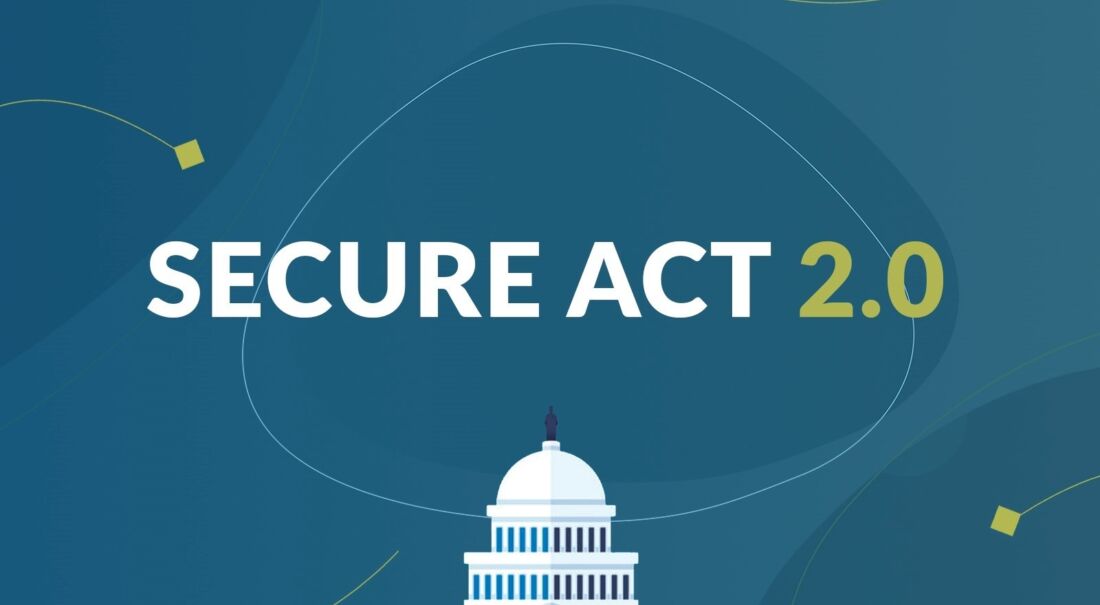SECURE 2.0
May 14, 2025 | By Alexis Burkhart

SECURE 2.0: What You Need to Know
New rules, deadlines, and planning insights for retirement plans — plus what Plan Sponsors should be aware of to stay ahead of the compliance and implementation requirements.
Many of the provisions of the SECURE 2.0 legislation were already effective during the last couple years. However, here’s a quick summary of some of the more significant changes coming in 2025 and 2026, what your organization needs to consider, and what we recommend to be prepared for when the audit comes around.
What’s Going On In 2025
- Long-Term Part-Time (LTPT) Employee Eligibility
- Effective: December 31, 2024
- Required? Yes, this is a mandatory provision for ERISA-covered 401(k) Plans.
- What It Does: Employees who work at least 500 hours/year for 2 consecutive years (previously 3) must be offered the chance to contribute to a 401(k).
Tip from your auditor:
This will primarily impact those plans that include an eligibility requirement to participate in the elective deferral feature of the plan based on years of service, based on hours worked, as opposed to the elapse of time. Accurate tracking of hours is very important. Make sure there is a process in place to track hours for eligibility and inform participants about the Plan timely when they do become eligible.
2. Catch-Up Contribution Limits for Participants Aged 60-63
- Effective: Effective for taxable years beginning after December 31, 2024
- Required? Depends, this is only a mandatory provision for plans that provide catch-up contributions.
- What It Does: Participants who meet the age requirement may contribute a higher amount in the form of catch-up contributions. The limit is the greater of $10,000 or 150% of the regular catch-up contribution for those aged 50 or older.
Tip from your auditor:
Ensure there is a process to identify those meeting the age requirement and communicate to see whether they want to contribute more for their retirement. If they do, properly track this in the payroll system to make sure the proper amount of elective deferrals are withheld.
3. Automatic Enrollment Requirements for New Plans
- Effective: Plan years beginning after December 31, 2024
- Required? Yes, this is a mandatory provision.
- What It Does: Any new Plan established must include an automatic enrollment feature of at least 3% of participant compensation and an auto escalation feature of 1% each year until it reaches at least 10%, but not more than 15%.
Tip from your auditor:
This is not effective for Plans already in existence, but any Plan after December 29, 2022 needs to incorporate this in their Plan documents (even though this provision is not effective until date referenced above).
Looking Ahead to 2026
- Roth Catch-Up Contributions for Employees with Compensation of $145,000
- Effective: Effective for taxable years beginning after December 31, 2025
- Required? Yes, this is a mandatory provision.
- What It Does: Employees aged 50+ earning more than $145,000/year who make catch-up contributions are required to have these catch-up contribution amounts designated as Roth (after-tax) contributions.
Tip from your auditor:
Payroll systems must be able to identify employees over the income threshold or there should be a manual process in place to identify these employees. Communication is important and employees should be provided information to understand these new provisions. Plans not currently offering a Roth provision will need to add this to comply with this legislation unless it does not allow catch-up contributions.
What You Should Be Doing Now
- Update Plan Documents and Internal Policies – Work with your third-party administrator or legal counsel to make sure your plan is amended to reflect the new rules, but some of these provisions may be required to be operationally implemented prior to a formal amendment. The deadline to formally amend your Plan for these SECURE 2.0 provisions is December 31, 2026 (for most qualified plans).
- Work with Your Recordkeeper – Recordkeepers are still building capabilities for many SECURE 2.0 features, so keep in touch to stay on track.
- Educate Your Employees – Employees need to understand the changes and options available to them with these new provisions. Conducting meetings would help to ensure that employees are properly informed.
Need help reviewing your plan’s readiness? We’re here to walk through the details with you and answer any questions you may have.

